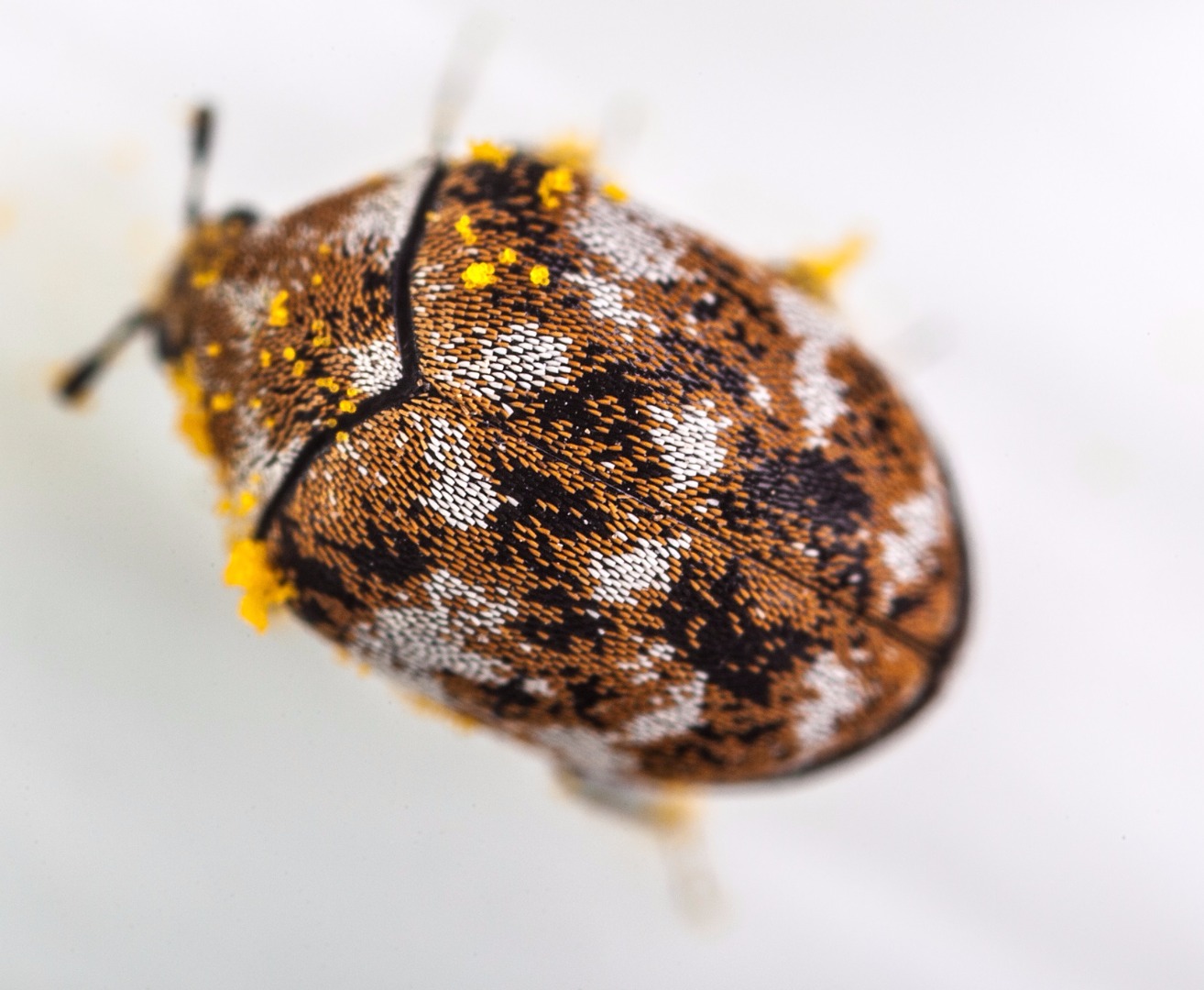Variegated carpet beetle
(Anthrenus verbasci)
The variegated carpet beetle can be found throughout Britain and Europe - often in homes, factories and stores. These pests can be highly damaging as larvae feed on fabrics, such as clothes, bedding, carpets and leather, as well as animal furs and skins.
Life cycle:
Incomplete metamorphosis
| Egg | The female variegated carpet beetle will lay up to 100 eggs on a larval food source, such as fabric or bedding. Development at this stage takes between 10-30 days. |
| Larva | Often known as the ‘woolly bear’, the continuously-feeding larvae grow through up to 5 moults. Distinctively banded, with short, sharp bristles – development at this stage takes several months. |
| Pupae | The pupae is the final stage before metamorphosis into the adult form. This process usually occurs in the spring, and lasts around 10 days. |
| Adults | Measuring between 1.5-4 mm, the variegated carpet beetle has a strong, oval-shaped body. It has a clubbed antennae and distinctive ‘W’ marks upon the skin. |
Habitat
Commonly found in Europe and the UK, these beetles feed on pollen plants during the warmer months. Often can be found in homes, factories and stores around various fabrics.



